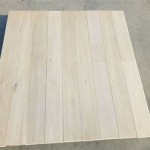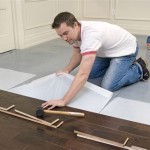Floating Bamboo Flooring Installation Guide: Essential Aspects
Floating bamboo flooring is an elegant and sustainable flooring option that offers a range of benefits, including durability, water resistance, and ease of installation. Installing floating bamboo flooring involves several key steps that must be followed carefully to ensure a successful outcome. Here are the essential aspects of floating bamboo flooring installation:
1. Preparation and Planning
Before starting the installation, it is crucial to determine the direction of the flooring planks, ensure the subfloor is level and stable, and carry out moisture testing. Allow the bamboo flooring planks to acclimate to the room's temperature and humidity levels for several days prior to installation.
2. Underlayment Installation
An underlayment is essential for providing sound insulation, moisture protection, and a smooth, even surface for the flooring planks. Install the underlayment according to the manufacturer's instructions, overlapping the edges.
3. Installing the First Row
Start by measuring and cutting the first row of planks to fit snugly against the wall, leaving an expansion gap. Tap the planks together using a tapping block and hammer, ensuring the joints are tight. Use spacers to maintain a consistent gap from the wall.
4. Continuing the Installation
For subsequent rows, insert the long edge of the plank into the groove of the previous row at an angle. Gently tap the plank into place until it clicks securely. Use a tapping block and hammer to close any remaining gaps.
5. Cutting Planks and Fitting Around Obstacles
Planks may need to be cut to fit around obstacles such as дверные коробки. Measure and mark the cuts carefully and use a jigsaw or circular saw to cut the planks to the desired size. When fitting around obstacles, it is often necessary to make small cuts or notches in the planks to ensure a snug fit.
6. Edging and Trimming
Once the main flooring area is complete, install edging or molding around the perimeter to cover the expansion gap and provide a finished look. Trim any excess from the underlayment and flooring planks using a utility knife.
7. Inspection and Cleaning
After installation, carefully inspect the floor for any loose or damaged planks. Use a broom or vacuum to remove any debris or dust. A damp mop can be used to clean the floor, but avoid using excessive water.
Conclusion
By following these essential aspects of floating bamboo flooring installation, you can achieve a beautiful and durable floor that will enhance the look and feel of your home. Remember to carefully plan and prepare, use proper tools and techniques, and pay attention to detail throughout the process.

Beginners Guide To Installing Bamboo Flooring The Company

Can A Bamboo Floor Be Floated The Flooring Company

Floating Bamboo Floors Should You Install Them Yourself

Can I Float A Solid Bamboo Floor The Flooring Company

The Benefits Of A Bamboo Floating Floor Complete Carpet Co

Bamboo Floors Installation Guide Floating The Floor Melbourne Top Flooring

Cali Bamboo Hardwood Flooring Tips On Cutting And Installation

Floating Bamboo Floors Should You Install Them Yourself

Floating Floor Vs Nail Down Slaughterbeck Floors Inc

Ppt Bamboo Flooring Pros And Cons Powerpoint Presentation Free Id 7433620
Related Posts








